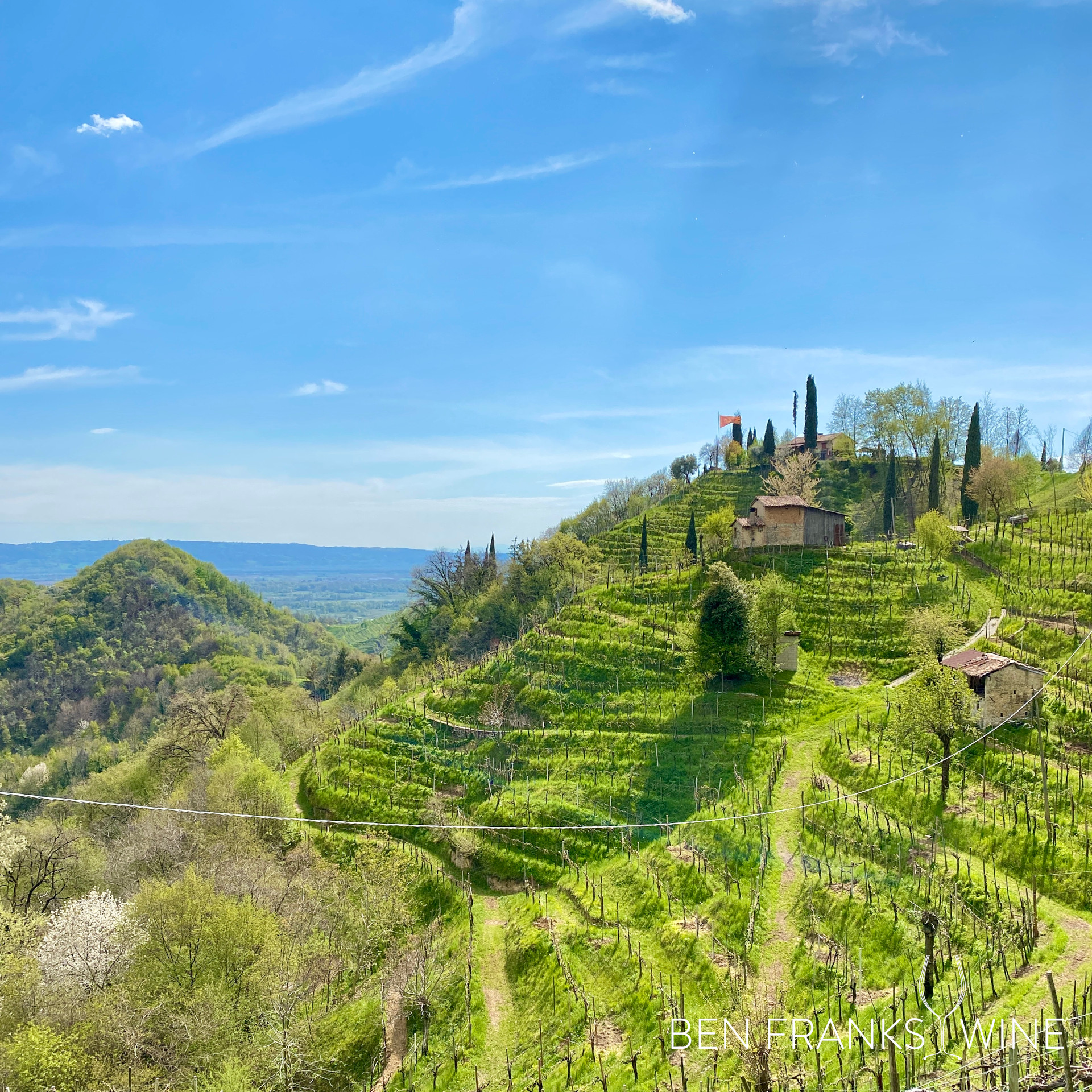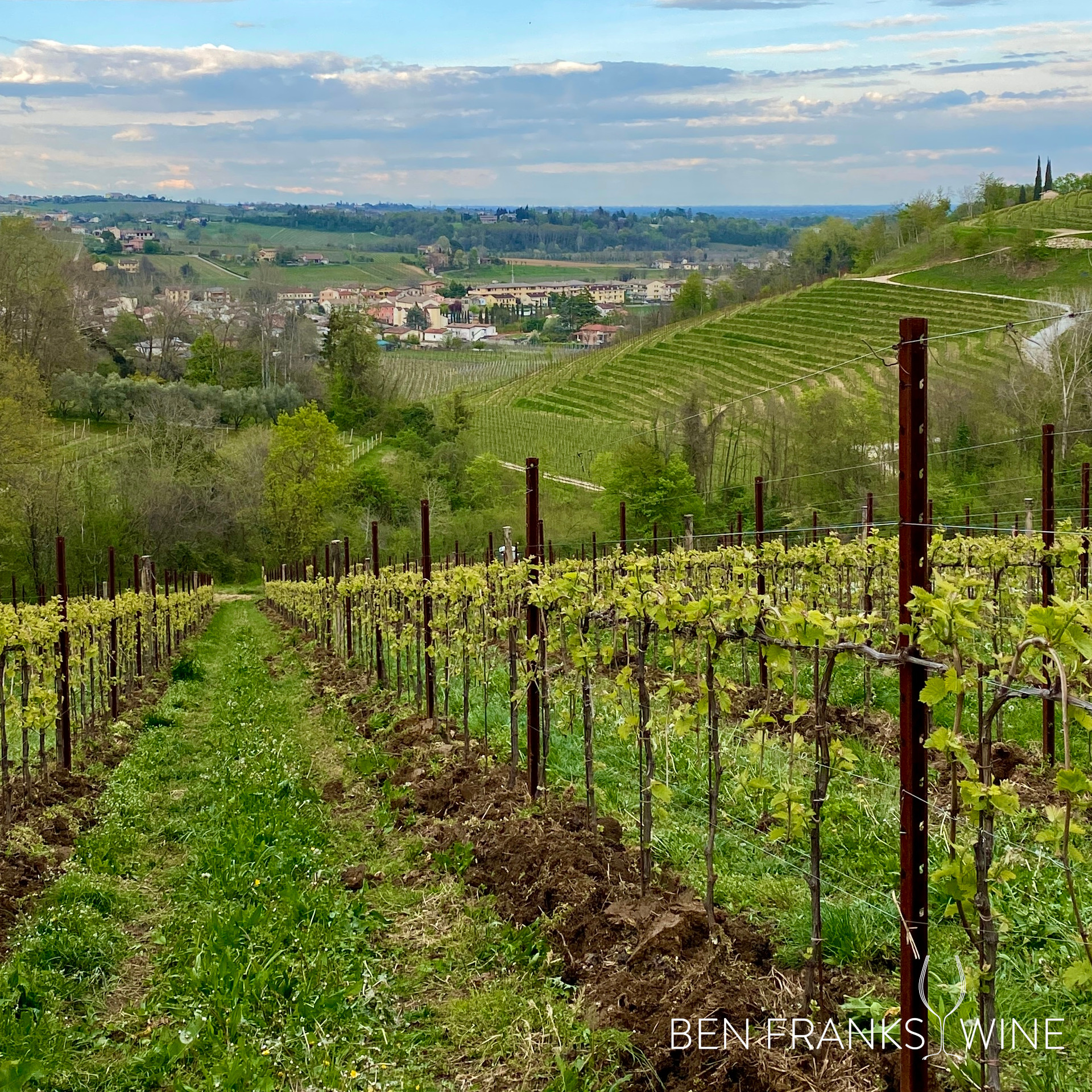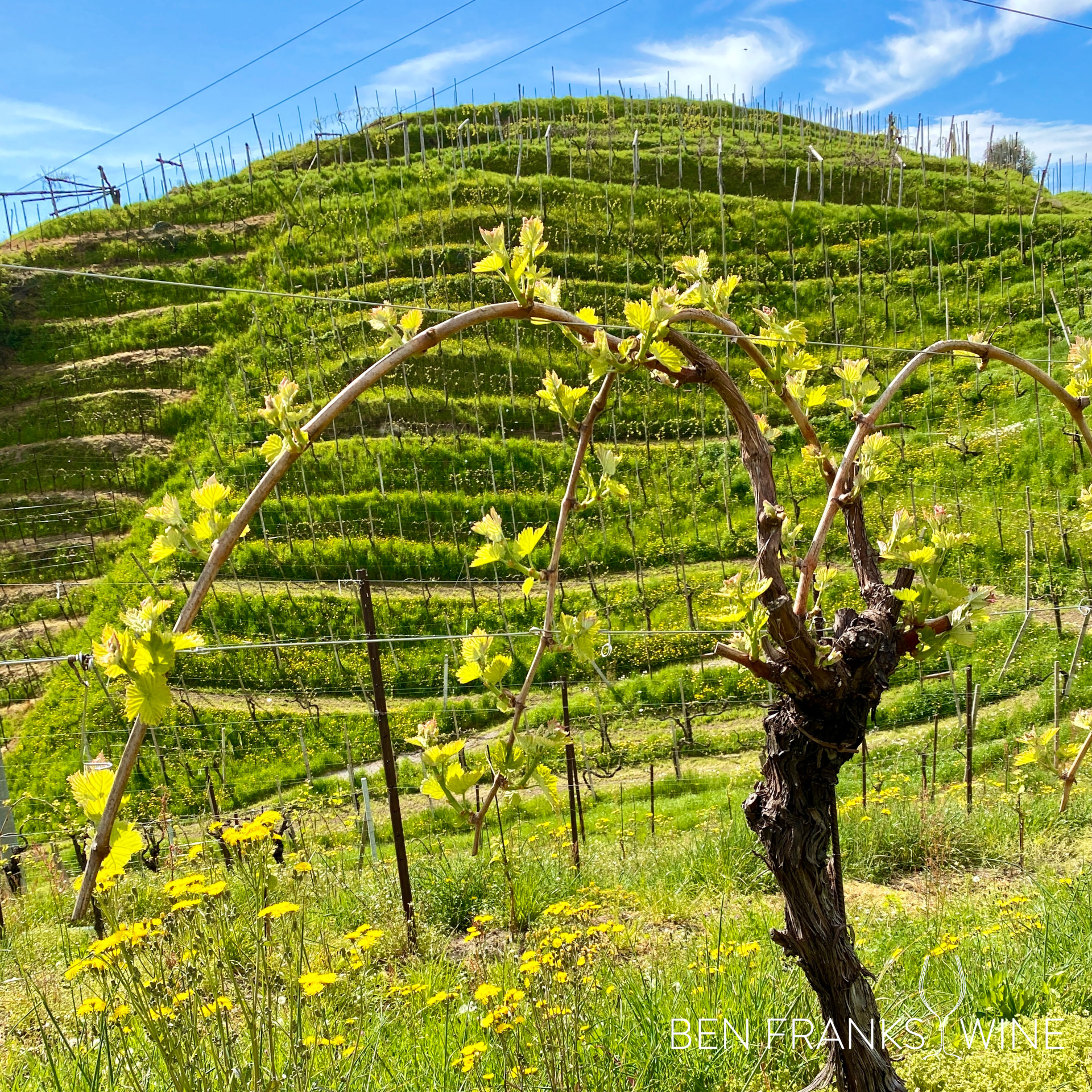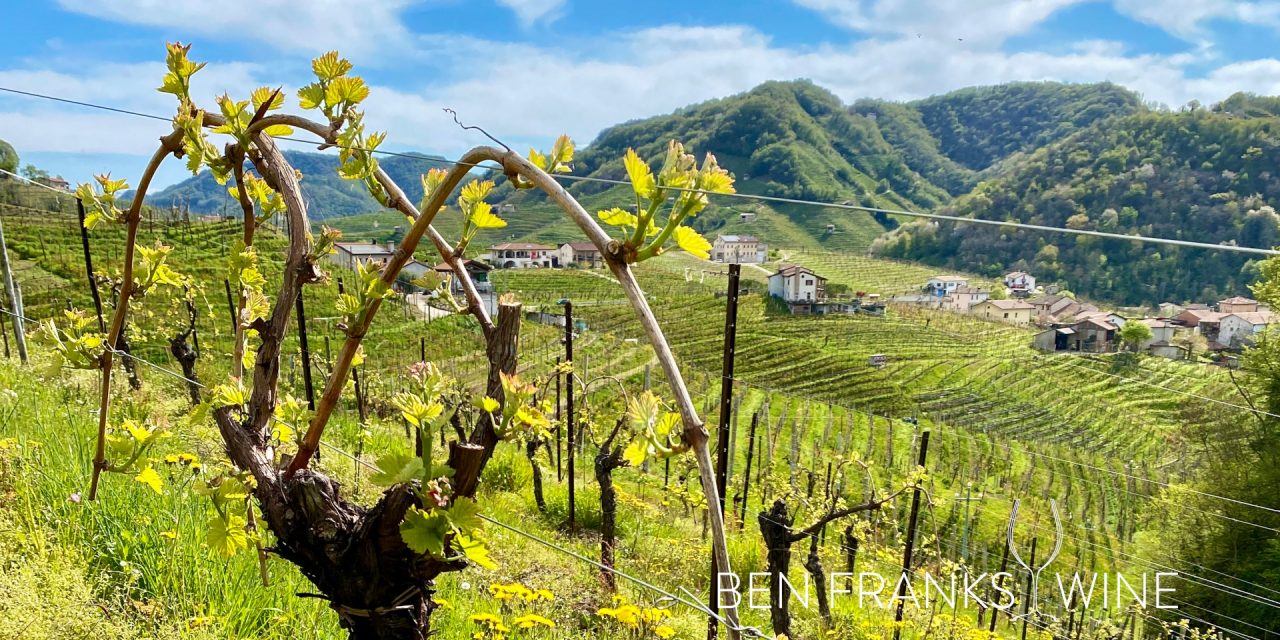How does the Conegliano Valdobbiadene Prosecco Superiore DOCG achieve success for its premium Proseccos and make a name for itself on the export market? In Ellie Scott‘s debut article for Ben Franks Wine, she reflects on the region’s long traditions and its new direction to modernise under the new Consorzio Director Diego Tomasi.
What do you think of when you hear the word Prosecco?
In many ways Prosecco has become a victim of its own success. For many in the UK, Prosecco has become a byword for cheap, off-dry fizz, conjuring up images of bottomless brunches and hen parties. And of course, those judgements don’t just come from consumers, there is a definite snobbishness amongst many in the wine trade when it comes to Prosecco.
The question for Conegliano Valdobbiadene Prosecco Superiore DOCG is therefore how to capitalise on the huge success Prosecco has had in the export market, while also being cognisant of this sometimes-negative image. In 2009, the PDO was restructured to separate the historic hillside vineyard area, now the DOCG, from the flatter plains where production had erupted on a massive scale. Since then, Conegliano Valdobbiadene Prosecco Superiore DOCG has been working to distinguish its centuries-old premium product.
Quality over quantity
Consorzio Director Diego Tomasi was appointed in 2021 and has been instrumental in focusing on raising the value of the product rather than the volume of production. No new vineyards are allowed to be planted in the DOCG, with maximum production of 100m bottles a year already reached. Diego’s background as an agricultural scientist has been important. Studies have shown an inverse relationship between yields and the flavour compounds terpenoids, benzenoids (both floral and fruity notes that can reflect varietal typicity and vary in intensity) and norisoprenoids (seen as an enhancer to fruity aromas, although can also contribute eucalyptus-like aromas or that distinctive kerosene aroma you find in Riesling), so yields in the DOCG are limited to 13.5 tonnes per hectare.

Hillsides of the Conegliano Vadobbiadene wine region.
Visiting Valdobbiadene, the centre of production, and Conegliano, the cultural centre of the region, you can see how the landscape and history shape the wines. The hills are steep and narrowly terraced, with small roads winding through pretty villages. One turn will bring views of rolling vineyards and cypress trees, the next, thick forests and smallholdings, all against the backdrop of the snow-capped peaks of the Dolomites.
This landscape brought UNESCO World Heritage Site status for the hills of Conegliano Valdobbiadene in 2019. The unique hogback mountains, the mosaic of forests and vineyards, and the narrow grassy terraced plots called ciglioni were cited in the award. Granted just before the pandemic, the region may have yet to capitalise on its UNESCO status in terms of wine tourism, but conservation has remained a big focus.
A more sustainable way
Conegliano Valdobbiadene became the first, and largest zone in Italy to ban the use of the controversial chemical glyphosate, a herbicide weedkiller. The DOCG’s Viticultural Protocol promotes environmentally friendly viticulture, and several wineries are certified SQNPI (Integrated Crop Management National Quality System). The Green Academy initiative from the Consorzio aims to bring structure to sustainability and climate change research in the region.

Vines with a view at Sorelle Bronca.
At winery Sorelle Bronca, analysis of honey, wax and pollen from beehives kept at the side of the vineyard enables viticulturalists to understand the effect of everything they do on the other plants and animals in the vineyard. Bees don’t like vine pollen, so the pollen they collect comes from other plants, and being very sensitive to pesticides, they act as a marker of the health of the environment.
Communicating the very best of Prosecco
Another way of raising the value of Prosecco Superiore DOCG has been with the introduction of 43 Rive, a word meaning steep slope, used to denote named high-quality vineyard sites. In an understandable show of vinous patriotism, you won’t find these described by locals as equivalent to crus or lieux-dits but they are just as important, with each Riva conveying a specific terroir. Lower yields and mandatory hand-harvesting ensure a premium product.
At the very top of the quality pyramid sits Cartizze, an ancient winemaking area of only 107 hectares, with very small plots tended by more than 100 winegrowers. Traditionally a sweet wine, Superiore di Cartizze DOCG is now more likely to cover the drier end of the spectrum, seemingly a sign of the ever-decreasing global demand for sweet wines. Colesel, the only winery with production from vine to consumer fully within the Cartizze boundaries, have decided to no longer produce the sweetest ‘Dry’ Cartizze. They will instead focus on lower sugar styles to showcase the quality of their fruit, cared for meticulously by five generations of the Bortolin family, on land that has not changed in over 300 years.

Steep terraces of Colesel.
Interestingly, regulations in Conegliano Valdobbiadene do not specify a winemaking method. While the Martinotti method (known as the Charmat method in France) is a natural choice for the semi-aromatic Glera, several winemakers choose to keep the wines in autoclave for longer on the lees, and there are even some Metodo Classico styles being made. Elena Moschetta at Bianca Vigna is at pains to point out that the standard view of tank method as a cheap way of making sparkling certainly doesn’t add up when it comes to the cost of equipping a modern winery.
DOCG sparkling wines must be spumante, with minimum 3 bars of pressure, rather than frizzante. Another smart move within the Conegliano Valdobbiadene Prosecco Superiore DOCG appellation has been to allow the production of the lower pressure Sui Lieviti as a separate category. For centuries known as Col Fondo, Sui Lieviti has also fallen victim to a naming confusion, with two producers trademarking Col Fondo in 2002. Meaning literally ‘on the lees’ and with a second fermentation in bottle without disgorgement, Sui Lieviti styles show some autolytic notes while retaining a fresh character and can be served either cloudy with the lees suspended, or clear depending on preference.

A Glera vine in flower.
What’s next?
With sustainability encompassing all areas of winemaking, including ethical and social aspects, the Consorzio is keen to promote both enotourism and other industry opportunities for young people in the region. Sui Lieviti, in particular, represents a chance for young winemakers to produce a wine which is both traditional yet modern-leaning and exciting.
There is a genuine desire to understand and improve the export opportunities for these wines. While sommeliers in UK fine dining restaurants may resist listing anything labelled Prosecco, offering a Sui Lieviti or a Superiore di Cartizze should pose no such issues. Both would sit happily on the shelves of a trendy wine bar or hipster wine shop. There are many bottles of Prosecco Superiore which should take pride of place as well.
Until a few years ago, almost all premium prosecco was consumed domestically, but the tide has started to turn. With their continued focus on quality, export demand for Conegliano Valdobbiadene Prosecco Superiore DOCG will surely continue to improve.
~
What would convince you to trade up to a premium bottle of Prosecco over, say, a Crémant? Let us know in the comments below.
Images by Ellie Scott.






